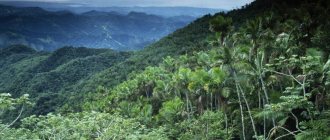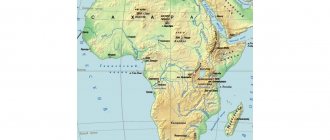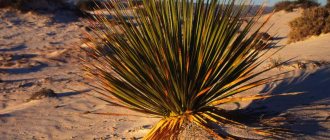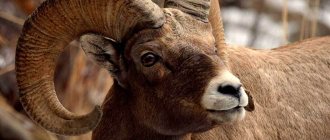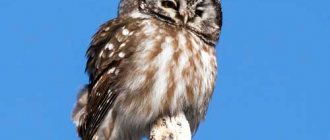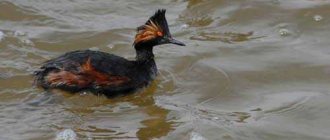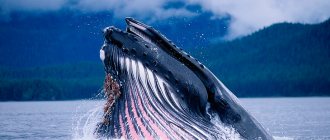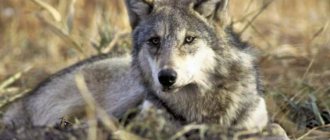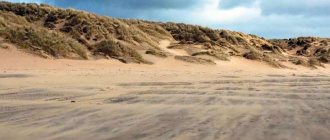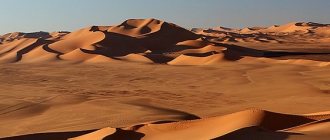Harsh climatic conditions have formed in the tundra, but they are somewhat milder than in the Arctic Ocean region. Rivers flow here, there are lakes and swamps in which fish and aquatic animals live. Birds fly over the open spaces and nest here and there. They stay here exclusively during the warm season, and as soon as it starts to get colder in the fall, they fly away to warmer climes.
Some species of fauna have adapted to the low frosts, snow and harsh climate that dominate here. In this natural area, competition and the struggle for survival are especially felt. To survive, animals have developed the following abilities:
- endurance;
- accumulation of subcutaneous fat;
- long hair and plumage;
- rational use of energy;
- a specific choice of breeding sites;
- formation of a special diet.
What is the humidification coefficient and how is it determined?
Humidification coefficient - the ratio of annual precipitation to the annual evaporation value for a given landscape, is an indicator of the relationship between heat and moisture. ...
Interesting materials:
How long does the 107 form last in the pharmacy? How long is an administrative offense stored in the Ukraine database? How long is something current on Instagram stored? How long does a loaf keep in the refrigerator? How long does protein cream last without refrigeration? How long does broccoli last after defrosting? How long does classic cheesecake last? How long does homemade sausage last in the freezer? How long do homemade cosmetics last? How long does homemade hydrosol last?
Birds of the tundra
Flocks of birds are making noise over the area. In the tundra you can find snowy plovers and owls, gulls and terns, guillemots and buntings, eiders and ptarmigan, Lapland plantains and red-throated pipits. During the spring-summer period, birds fly here from warm countries, organize massive bird markets, build nests, hatch eggs and raise their chicks. By the onset of cold weather, they must teach the young to fly, so that they can all fly south together. Some species (owls and partridges) live in the tundra all year round, as they are already accustomed to living among the ice.
Little Plover
Tern
Guillemots
Eider combs
Lapland plantain
Red-throated Pipits
Mammal animals
Typical inhabitants of the tundra are arctic foxes, reindeer, lemmings and polar wolves. These animals are adapted to life in cold climates. To survive, they must constantly be on the move and look for food. Polar bears, foxes, bighorn sheep and hares, weasels, stoats and minks are also sometimes found here.
Lemming
Weasel
Thus, an amazing animal world was formed in the tundra. The life of all representatives of the fauna here depends on the climate and on their ability to survive, so unique and interesting species have gathered in this natural area. Some of them live not only in the tundra, but also in adjacent natural areas.
Sea lion
The sea lion is a marine mammal characterized by small ears, long and wide front flippers, the ability to walk on all fours, and short, thick fur. The front flippers are the main means of propulsion in the water. Their range extends from subarctic to tropical waters of the world's oceans, in the northern and southern hemispheres, with the exception of the North Atlantic Ocean. The average life expectancy is 20-30 years. The male sea lion weighs about 300 kg and has a body length of 2.4 meters, while the female weighs 100 kg and has a body length of 1.8 meters. Sea lions consume large amounts of food, about 5-8% of their body weight per feeding. The diet consists of: fish (e.g. capelin, cod, herring, mackerel, pollock, sea bass, salmon, sand lance, etc.), bivalves, cephalopods (e.g. squid and octopus) and gastropods. Under the animal's skin there is a thick layer of fat, and along with thick hair, it protects the animal from the harsh climatic conditions of the tundra.
iv>
These animals are capable of diving deeply underwater (up to 400 meters), and through many inherent physiological processes (heart rate, gas exchange, digestion rate and blood flow), the animal's body copes with the high pressure caused by diving.
The terrestrial lifestyle is used for resting, molting and reproduction. Sea lions may come onto land to bask in the sun.
Distinctive features
The main point that characterizes forest-tundra soils is excessive moisture combined with permafrost. It is the freezing of the soil that is observed throughout the entire length of the designated territory, however, in the direction from the western part to the east, its deepening changes dramatically. The reason for this is the predominance of the continental forest-tundra climate.
It is worth noting that the distribution of permafrost is very uneven. This feature is clearly visible in the west; the soils here are characterized by unequal subsidence, which causes the occurrence of all kinds of sinkholes and failures. Precipitation falls in large quantities, significantly exceeding the evaporation rate. Due to such climatic conditions, soil waterlogging occurs. Moreover, ongoing thermokarst processes lead to the constant creation of shallow lakes of small sizes. If we consider the transition zone, it is characterized by the presence of the following swamps:
- sphagnum;
- hypnotic;
- peat.
American ground squirrel
The American ground squirrel is a species of small rodent from the squirrel family. It is found in the tundra and is preyed on by foxes, wolverines, lynxes, bears, and eagles. In summer it feeds on tundra plants, seeds and fruits to increase fat before hibernation. Towards the end of summer, male ground squirrels begin storing food in their burrows so that they have something to eat in the spring until new vegetation grows. The burrows are covered with lichens, leaves and musk ox hair.
During hibernation, the ground squirrel's brain temperature drops to near freezing, body temperature reaches -2.9°C, and heart rate drops to ~1 beat per minute. The temperature of the colon and blood becomes sub-zero. Hibernation for adult males lasts from late September to early April, and for females - from early August to late April. Body temperature decreases from 37° C to - 3° C.
The coat color changes depending on the time of year. The fur is soft and velvety, and protects the animal from cold winds.
Its homeland is the North American Arctic tundra, and its main habitats are on mountain slopes, river bottoms, lake shores and mountain ranges. Gophers prefer sandy soil because of easy digging and good drainage.
Soil features
The geographical position of the tundra and forest-tundra predetermined the presence of permafrost terrain here, which is represented by marshy soils, both highland and lowland. In this area, over the course of many centuries, peaty-gley and peat-gley soils were formed on finely hilly expanses. Everywhere you can find small areas with swampy peat soils. They are created by nature on flat-buffered peat bogs, the layer of which is represented by a whole series of horizons, differing only in the stage of decomposition.
In some places, the designated type of soil in the forest-tundra has a layer of mineral origin underneath it, characterized by a light mechanical composition. In such zones, the most intense outflow of moisture is observed, resulting in the creation of optimal conditions under which peat decomposes as quickly as possible. Upper permafrost soils are distinguished by the fact that their peaty horizons are subject to severe cracking and subsequent drying. It is for this reason that there is no central vegetation cover.
Gley terrain in the forest-tundra
The profile characteristics of such soils are represented by certain layers that have their own characteristics. For example, Ao is a slightly peat litter, not exceeding 6 cm in thickness; its second name sounds like a living plant cushion.
The next layer is designated AoA1 (A1), it is represented by a coarse humus or peaty, loamy, intensely moistened horizon up to 20 cm in depth. It is colored brown-brown or dark gray, sometimes with inclusions. At this level there is a large number of roots of all kinds of plants, closely intertwined with each other. It is worth noting that these types of soils cannot be found in spotted tundras, but they may be there in their infancy.
The next layer Bg (G) no more than 50 cm with an uneven brown color is represented by many peculiar spots from rusty to bluish. It may contain the following layers:
- gleyed;
- gley illuvial;
- wet;
- thixotropic;
- loamy;
- clayey.
The long-permafrost stratum GM is the soil-forming rock. The dark-gray, frozen and gley layer is everywhere permeated with ice veins, creating a problem for the normal growth of many plants.
Environmental problems and nature conservation
The environmental problems of forest-tundra and tundra are similar. One of the key ones is related to mining. Another pressing environmental problem is the destruction of fertile soil by machinery used by people. In the difficult terrain of the forest-tundra, machines cause irreparable damage to the vegetation. It will take more than tens of years to restore it.
The forest-tundra also had to face environmental problems that are pressing today - oil waste, air pollution.
The nature of the forest-tundra is unstable and easily wounded, so it requires special careful treatment. In order to protect natural monuments and landscapes, special reserves have been created:
- Taimyr;
- Ust-Lensky;
- Wrangel Island.
Forest-tundra nature is unique. People need to protect its natural heritage so that in the future they do not face more global problems that will be almost impossible to solve.
Ermine
The stoat is a small predator, a member of the mustelidae family. The body length including the head is 16-31 cm, and the weight is 90-445 grams. Sexual dimorphism is pronounced, males are larger than females. They have a long, thin, cylindrical body, short legs and a long tail. Individuals living in the tundra have thicker and lighter fur than their relatives from other climatic zones.
They have excellent eyesight, smell and hearing, which are used in hunting. Stoats are agile and good at climbing trees. They are also excellent swimmers, capable of crossing wide rivers. They move through the snow using jumps on their hind legs up to 50 cm in length.
They are carnivores and their diet consists of: rabbits, small rodents (such as voles), hares, birds, insects, fish, reptiles, amphibians and invertebrates. When food is scarce, they eat carrion (dead animal carcasses).
Geographical location and climatic conditions
The forest-tundra on the map is located in the zone of severe subarctic climate. Location - north of the Arctic Circle, starts from the territory of the city of Murmansk and ends with the Indigirka River, located in the northeastern part of Yakutia.
Its length from north to south varies from 20 to 200 km. The climate in the forest-tundra is very similar to the tundra. However, summers here are much warmer and longer. The average temperature in July reaches 10-14 degrees, and in January it can drop to -40.
The amount of precipitation in the forest-tundra is 150−300 mm per year. Permafrost is observed throughout the entire natural zone. It is this, as well as the abundance of moisture, that leads to the formation of swamps.
Farming Basics
An increase in population, a colossal leap in the development of industrial activity, and a favorable environmental situation have led to the fact that not only annual grasses and perennials began to be actively grown on the soils of the tundra and forest-tundra of Russia. Currently, people here successfully cultivate various vegetables, such as turnips, carrots, cabbage, beets and onions, potatoes and even rutabaga. The economic use of available fertile soils is actively underway; plans for the near future include the development of soils in the harsh zone, remote from populated areas.
For farming, well-drained and light soils are mainly used, located in areas on southern slopes. With warming, they thaw to a considerable depth and are sufficiently warmed by the sun, which cannot be said about clay and loamy soils.
Sea and river inhabitants
The main inhabitants of reservoirs are fish. The following species are found in rivers, lakes, swamps and seas of the Russian tundra:
Omul
Whitefish
Salmon
vendace
Dallia
The reservoirs are rich in plankton and inhabited by mollusks. Sometimes walruses and seals from neighboring habitats wander into the tundra waters.
Vegetable world
The vegetation is multi-layered: from grass and shrubs to low trees. The most common are dwarf birch, spruce, and larches. In Siberia there are cedar and alder.
Trees often have an unusual appearance: due to a poorly developed root system, their trunk is curved at the base. Beautiful spruce and birch trees become like hunched monsters.
The flat forest-tundra is rich in berries. Here you can find blueberries, blueberries, lingonberries, cranberries, and cloudberries.
Rice. 2. Lingonberry
